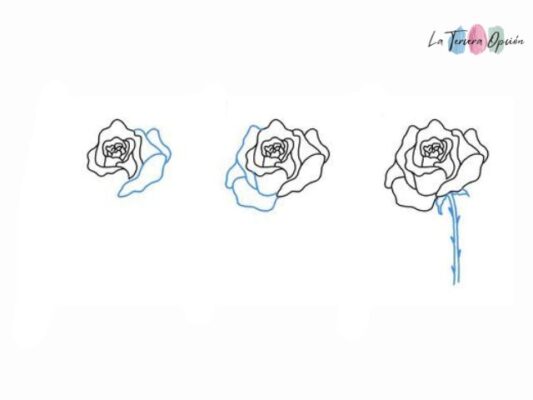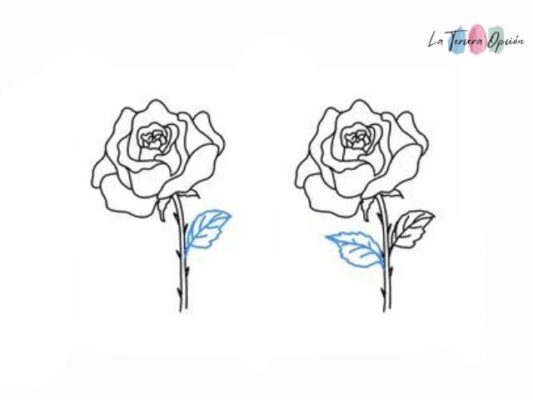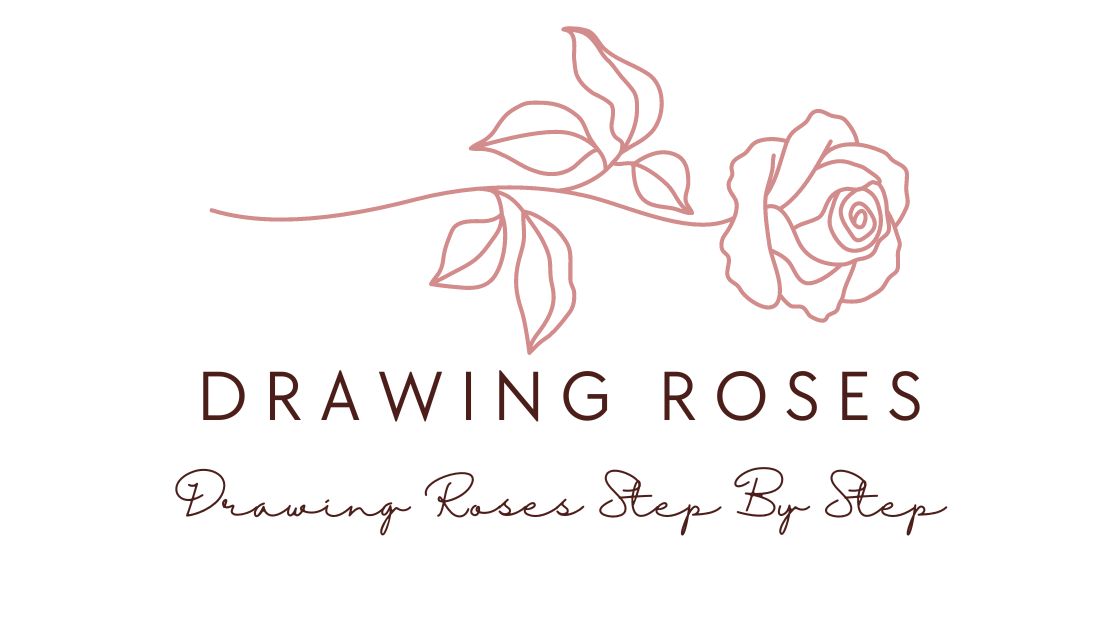Drawing roses can seem like a daunting task, but with the right guidance and step-by-step approach, it becomes much more manageable. Whether you’re a beginner or an experienced artist, mastering the art of drawing roses can be a rewarding endeavor. In this guide, we will break down the process into simple, easy-to-follow steps, allowing you to create beautiful rose illustrations with confidence and precision. Let’s embark on this creative journey together and unlock the secrets to drawing roses step by step.
Drawing Roses Step By Step
1. Start with an Oval Shape
Begin your rose drawing by sketching an oval shape. Remember, it doesn’t have to be perfect since roses in nature vary in shape and size. This oval will serve as the base for the rose. Starting with a simple shape like an oval provides a foundation for the rest of the drawing. Don’t worry about precision at this stage; focus on capturing the basic form of the rose.

2. Draw a Spiral Inside the Oval
Inside the oval, draw a small spiral. The direction and number of turns in the spiral are not critical. This spiral will guide the formation of the inner petals of the rose. The spiral helps in positioning the inner petals of the rose. It serves as a reference point for creating the intricate details of the flower.

3. Outline with a Heart Shape
Surround the spiral with a heart shape. Start at the top of the oval, ensuring that the cleft of the heart touches the oval. The sides of the heart don’t have to be symmetrical, adding to the natural appearance of the rose. The heart shape forms the outer boundary of the rose and provides a framework for the petals. Embrace imperfections in the shape, as they contribute to the organic feel of the flower.
4. Connect with Curvy Lines
Draw curved lines following the contours of the heart shape. Start at the top, creating a loose, curvy shape resembling a letter “S.” Form a pointy “V” shape and extend it to the bottom of the heart. Repeat this process on the opposite side of the heart shape, ensuring that the lines intersect smoothly. These lines represent the outer petals of the rose and add depth to the drawing. Focus on achieving graceful curves to convey the natural elegance of the flower.
5. Form the Blossom
Complete the rose blossom by drawing a “U” shape at the bottom of the heart. You can add a subtle curve at the top to enhance the organic feel of the flower. The “U” shape defines the bottom of the rose blossom, contributing to its overall structure. Visualize the rose taking shape as you refine the curves and contours.

6. Add Detailing
Enhance the drawing by adding details. Draw a curved line from the tip of the “V” shape to the bottom of the blossom, mimicking the structure of real rose petals. Additionally, include two lines connecting the oval shape to the heart shape, if necessary. These details add realism and dimension to the rose drawing, making it more visually engaging. Pay attention to the subtle nuances of the petals and their connections to create a lifelike representation.

7. Include Sepals
Underneath the flower, draw a few sepals. These small, leaf-like structures support the base of the flower and add authenticity to the drawing. Sepals are essential elements of a rose and provide structural support to the blossom. Incorporating them into the drawing adds realism and completeness to the composition.
8. Draw the Stem and Leaf
Extend a stem from the base of the flower, and draw a leaf attached to the stem. The stem can be straight or slightly curved, depending on your preference. The stem and leaf complement the flower, adding context and balance to the composition. Consider the angle and curvature of the stem to convey the natural growth of the rose.
9. Color Your Drawing
Finally, bring your rose drawing to life by adding color. Choose hues that reflect the vibrancy of real roses, and experiment with shading and blending techniques to add depth and dimension. Coloring allows you to personalize your drawing and infuse it with your artistic style. Explore different color palettes and techniques to create a visually captivating rose illustration.

Conclusion
In summary, drawing a rose step by step involves starting with simple shapes and gradually adding details to create a beautiful flower. With practice and patience, anyone can learn to draw a rose that captures its elegance and beauty. So, grab your drawing materials and start sketching your own stunning roses today!
Related Post
Style Standouts: Unique Clothing Selections
Exploring Horror Art Services Design Ideas
Skills for Success in E-commerce: Top 5 Skills

